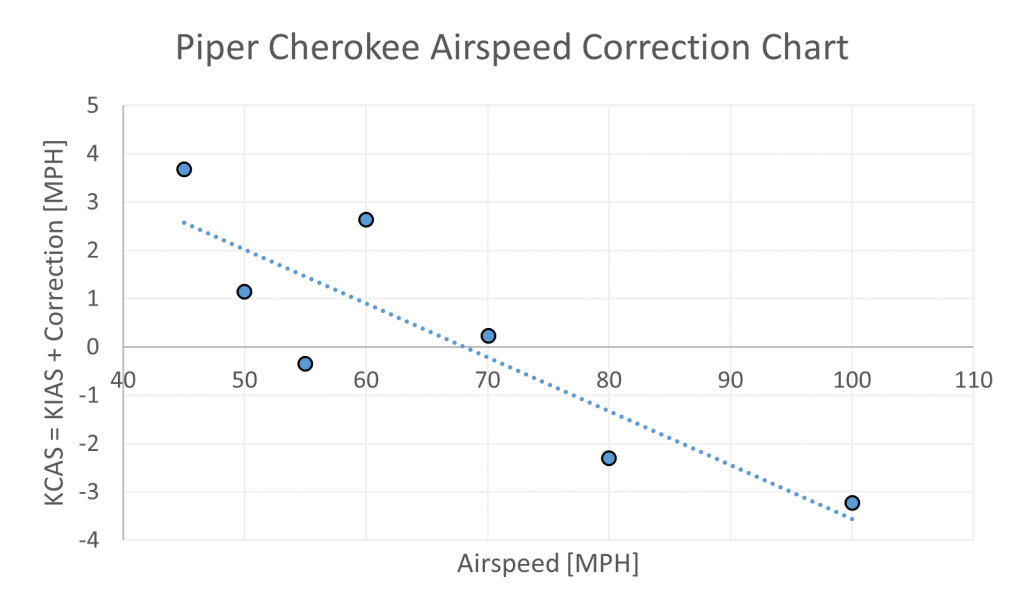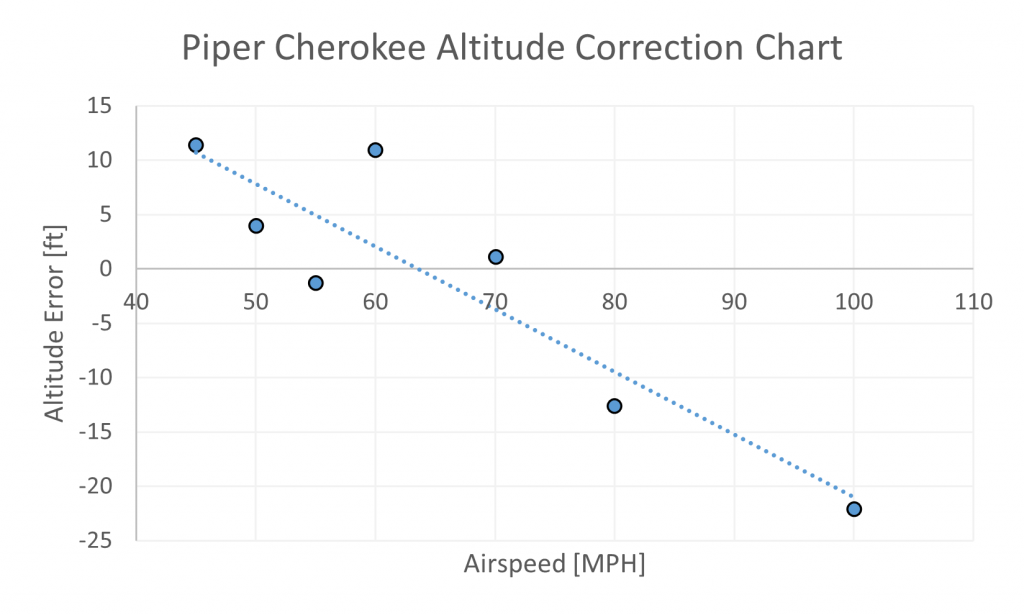This note determines the airspeed calibration card for a Piper Cherokee aircraft. The flight occurred on 6 December 2020 near College Station with a PA-28 140. Minimal onboard equipment was used: the airspeed indicator, the altimeter, and the outside air temperature. A personal uAvionix Sentry connected to Foreflight provided the GPS derived track and groundspeed.
Using a personal algorithm, the indicated to calibrated airspeed data points were reduced and plotted.
The trend is clear. At low speeds, the airspeed indicator reads too low (a common error). The errors at cruise are negative; the airspeed indicator reads too high. Only at around 70 MPH is the error near zero. Unfortunately, at the low end, there is more scatter than I hoped for. This scatter is likely resulting from the challenges of 1) precisely maintaining a specified indicated airspeed with an analog airspeed indicator, while 2) recording the average groundspeed and track. A future approach will use the raw GPS data points.
If we assume that the errors are solely resulting from errors in the static pressure (a reasonably good assumption), then we can determine the effective altitude errors associated with the static pressure error. These just barely meet the +-30 ft legal requirement at 100 kts.
For such a short flight, we were able to determine the overall character and approximate error curves of the airspeed indicator and altimeter. A more formal program would involve multiple people, multiple data points at the same test condition, and much more flight time.


